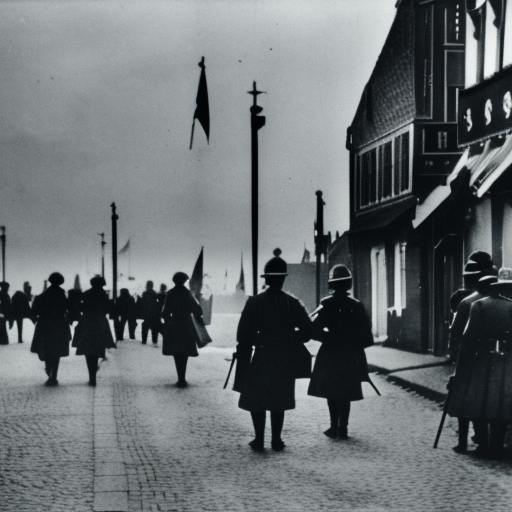Siege of Bergen op Zoom: A Desperate Defense
The Siege of Bergen op Zoom was a significant event that took place during the War of the Sixth Coalition, a series of conflicts fought between Napoleon Bonaparte’s French Empire and a coalition of European powers. The siege occurred from March 8 to March 21, 1814, in the town of Bergen op Zoom, located in present-day Netherlands. The defending forces, consisting of Dutch, British, and German troops, faced off against the French army led by Marshal Pierre François Charles Augereau.
The Background
By 1814, Napoleon’s empire was crumbling, and the Sixth Coalition was gaining momentum. The coalition forces, including the British, Russians, Prussians, and Austrians, had successfully pushed the French out of most of the European territories they had conquered. Bergen op Zoom, a strategically important town, was one of the last strongholds held by the French in the Netherlands.
The Siege Begins
On March 8, 1814, the coalition forces launched their assault on Bergen op Zoom. The French garrison, commanded by General Jean-Baptiste Dumonceau, was heavily outnumbered and lacked adequate supplies. The coalition forces, aware of the desperate situation of the defenders, hoped for a swift victory.
The Defense
Despite being outnumbered, the defenders of Bergen op Zoom put up a fierce resistance. The town was fortified with walls, bastions, and moats, making it difficult for the attackers to breach the defenses. The defenders, consisting of Dutch, British, and German troops, fought valiantly to repel the coalition forces.
The Assault
The coalition forces launched several assaults on the town, but each attempt was met with determined resistance. The defenders used artillery, musket fire, and bayonets to hold off the attackers. The narrow streets and buildings of Bergen op Zoom provided excellent cover for the defenders, making it challenging for the coalition forces to advance.
The French Counterattack
Realizing that their situation was becoming increasingly dire, the French garrison launched a counterattack on March 12. Led by General Dumonceau, the French troops managed to briefly push back the coalition forces. However, their success was short-lived, as the coalition forces regrouped and resumed their assault on the town.
The Final Stand
As the siege continued, the defenders of Bergen op Zoom faced dwindling supplies and mounting casualties. Despite their desperate situation, they refused to surrender. On March 21, the coalition forces launched a final assault on the town. The defenders fought fiercely, but they were ultimately overwhelmed by the sheer numbers of the attackers.
The Aftermath
The Siege of Bergen op Zoom resulted in a decisive victory for the coalition forces. The town fell into their hands, marking the end of French control in the Netherlands. The defenders, though defeated, earned admiration for their bravery and determination in the face of overwhelming odds.
Legacy
The Siege of Bergen op Zoom is remembered as one of the most heroic defenses of the Napoleonic Wars. The defenders’ resilience and courage became a symbol of Dutch resistance against foreign occupation. The siege also highlighted the effectiveness of fortified towns in delaying enemy advances and inflicting heavy casualties.
In conclusion, the Siege of Bergen op Zoom was a desperate defense by Dutch, British, and German troops against the French during the War of the Sixth Coalition. Despite being heavily outnumbered and lacking supplies, the defenders put up a fierce resistance, utilizing the town’s fortifications to their advantage. The siege ended with a decisive victory for the coalition forces, marking the end of French control in the Netherlands. The defenders’ bravery and determination in the face of overwhelming odds have left a lasting legacy in Dutch history.












